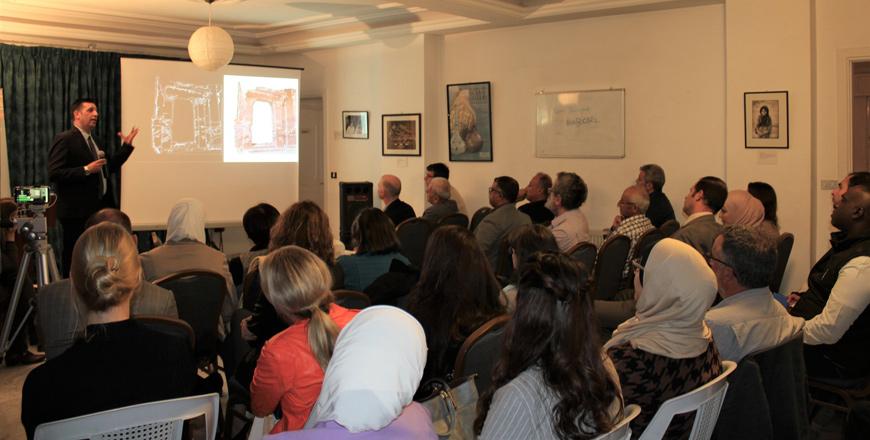You are here
7th Heritage and Archaeology Diwan kicks off in Amman
By Saeb Rawashdeh - Jul 22,2023 - Last updated at Jul 22,2023
AMMAN — The French Institute for the Near East (IFPO) and the Council for the British Research in the Levant (CBRL), along with Al Hussein Technical University, the American Centre of Research and the German Protestant Institute of Archaeology, organised the seventh Heritage and Archaeology Diwan in Amman on Saturday and Sunday.
“I’m really enjoying what I’m seeing today as we believe in a new vision and strategy regarding the preservation of Jordanian heritage. Our aim at the Department of Antiquities [DoA] is to protect not just Jordanian, but global archaeological heritage,” said Director-General of the DoA, Fadi Bala’awi in his opening remarks at Al Hussein Technical University.
The task ahead of the DoA is very complicated, as the department must protect thousands of sites, Bala’awi said, adding that expertise is “of crucial importance” to successfully fulfill the department’s mission.
In discussing mid-20th century residential modernism in Amman, Bayan Mujahed, scholar of architectural conservation, pointed to the emergence of new social and political movements that shaped the Jordanian intellectual scene in 1930s and 1940s.
“Each private house at that time had its narrative,” Mujahed said.
“Amman is a modern metropolis, a city blessed with ancient tradition,” said CBRL’s Rudeina Momani, “The capital city of the Hashemite Kingdom of Jordan currently has a population of more than 4 million, but in 1924, it consisted of little more than a collection of dwellings and some 2000–3000 inhabitants.”
Momani, along with fellow CBRL colleagues Shatha Mubaideen and Dana Salameen, studied houses in Jabal Amman and Jabal Luweibdeh, labelling these areas “Amman’s cultural district”.
They analysed 75 houses, dividing them in the following categories: very good condition, good condition, adaptive re-use, abandoned and destroyed.
During the panel on archaeological studies, Aven Qatameen from the University of Jordan explored the significance of Neolithic ritualistic burials and their location patterns.
“The Southern Levant is an area with some of oldest human settlements,” Qatameen said.
Practices in the southern Levant were part of a broader cultural transformation that influenced the development of other cultural practices in the region, she explained.
“The locational emphasis placed on the burial sites may have influenced settlement patterns, while the symbolism associated with the grave goods may have influenced the development of art and other cultural practices,” Qatameen underlined, adding that the beliefs and customs associated with burial practices also influenced the development of religion in the region.
Related Articles
AMMAN — A lecture titled “Mapping Digital Cultural Heritage in Jordan” (MaDiH), was held on Monday at the British Institute in Amman (CBRL).
AMMAN — The remains of the Iron Age settlement Tell Al Rumayth, near Ramtha, belongs to the Ramtha Antiquities office, stated Director
AMMAN — The Jordanian Pharmacists Union has urged the government to allow pharmacies to perform rapid antigen tests (RAT) for potential COVI
















